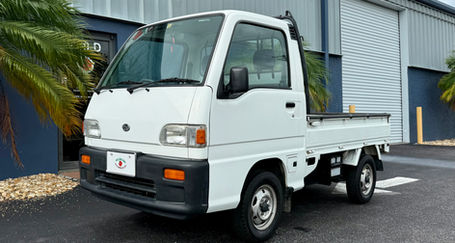Kei Vehicles Explained: The land of the rising sun's Small Vehicle Wonders
In the realm of vehicle engineering, the Japanese has introduced a unique category of vehicle that has captured the hearts of car lovers and everyday drivers alike: the kei truck. These compact, versatile vehicles, known for their notable practicality and efficiency, are a staple on the streets of Japan. Designed with a clear set of regulations, kei trucks are not only a testament to Japanese ingenuity but also an integral part of the country's transportation landscape.
At first glance, you might think kei trucks are just miniature versions of regular pickup trucks, but their charm lies in their unique features and smart design. With their tiny frames and lightweight build, kei truck s are perfect for navigating congested urban environments and rural landscapes alike. Whether used for small business deliveries or personal errands, these trucks offer an unparalleled blend of functionality and adaptability, making them a fascinating subject for anyone interested in cars.
History of Kei Trucks
Kei vehicles originated in Japan in the aftermath of World War II as a response to the country's economic challenges. The Japanese government recognized the necessity of cost-effective and efficient transportation that could navigate the streets of quickly evolving urban areas. In 1949, the kei vehicle category was officially established, creating a niche for small and practical vehicles, including trucks. This classification included standards for dimensions, engine displacement, and power output, which made kei trucks available to a broader audience.
Throughout the 1950s and 1960s, kei trucks gained popularity among small businesses and farmers due to their small size and adaptability. They became essential for hauling cargo in rural areas where bigger trucks found it difficult to operate. Manufacturers like Suzuki, Daihatsu, and Mazda began to develop new models within this category, producing various designs that catered to various commercial needs while adhering to the kei regulations. As Japan's economy prospered, so did the interest in these small trucks.
The 80s and 90s saw kei trucks change, with advancements in technology and design. Their utility and efficiency made them important not only in agricultural sectors but also in cities for logistics and repairs. The kei truck segment continued to thrive, culminating in a distinct cultural significance that remains prominent in contemporary Japan. With their distinct charm and practicality, kei trucks have solidified their place as beloved miniature automotive marvels, reflecting Japan's unique automotive heritage.
Structure and Specifications

Kei vehicles are a distinct class of vehicles that represent compact design and practicality. These trucks are noted by their compact dimensions, typically measuring no more than 3.4 meters in size and 1.48 meters in breadth. Their compact size allows for great maneuverability in busy urban areas, making them perfect for driving in cities and minor delivery jobs. The layout often features a boxy shape that optimizes interior space while providing a practical, useful appearance.
The technical details of kei trucks include a 660cc engine, that adheres to specific regulations in Japan to meet the criteria of kei vehicle classification. This engine size is designed to achieve efficiency and performance, providing adequate power for light hauling while maintaining excellent fuel economy. Additionally, kei trucks are often equipped with a light frame and basic mechanics, which contribute to their affordable operation and repair simplicity, making them popular among entrepreneurs and agriculturists.
In terms of carrying capacity, kei trucks can carry a top load of around 350 kg to 500 kg, depending on the model and configuration. Many kei trucks are equipped with features such as four-wheel drive, which enhances their functionality, especially in rural or off-road conditions. The flexibility in configuration allows for multiple body styles, including flat-bed configurations, delivery vans, and even chilled units, catering to various transportation requirements across Japan.
Popular Variations and Uses
Kei vehicles have become crucial transportation options in diverse sectors throughout Japan due to their adaptability and limited footprint. Some of the top models include the Suzuki Carry truck, Daihatsu Hijet variant, and Honda Acty. These units are designed to perform in urban environments where space constraints exist. Their low weight and compact design make them suited for traversing narrow streets and crowded areas, enabling businesses to deliver goods swiftly.
In agricultural regions, kei trucks are popular among rural entrepreneurs and small businesses for their usefulness. These trucks can haul agricultural supplies, tools, and even minor animals, making them invaluable on farms. The cargo design of many kei trucks facilitates hassle-free loading and unloading, further improving their utility for transporting items of various dimensions. Additionally, their economical fuel consumption makes them economically viable for routine tasks.
Additionally, kei trucks are progressively for recreational purposes. Many outdoor enthusiasts utilize these units for camping trips and off-road journeys. The compact size facilitates swift navigation in nature, while certain variations can be adapted to hold camping gear or even small trailers. This flexibility not only demonstrates the usefulness of kei trucks but also exhibits their wide-ranging popularity across different customer segments in Japan.